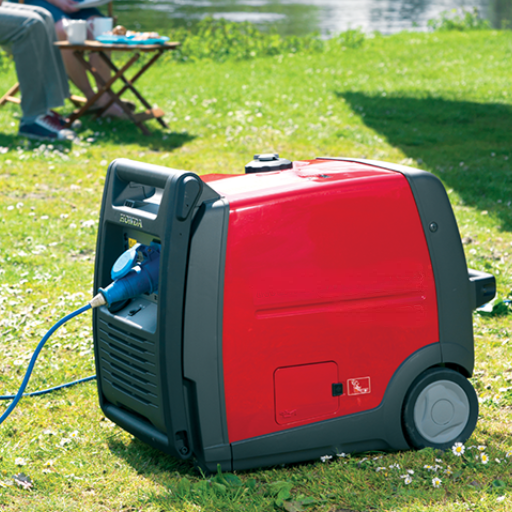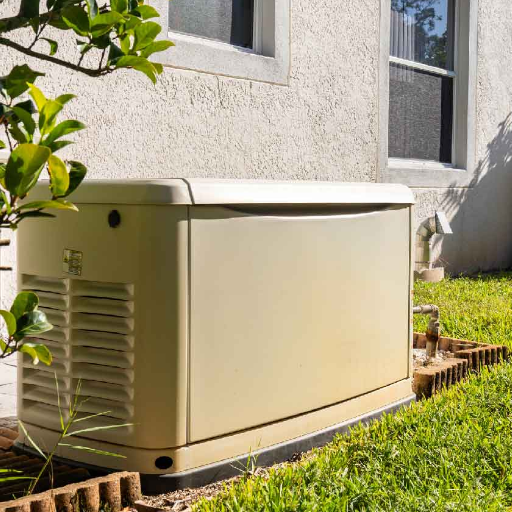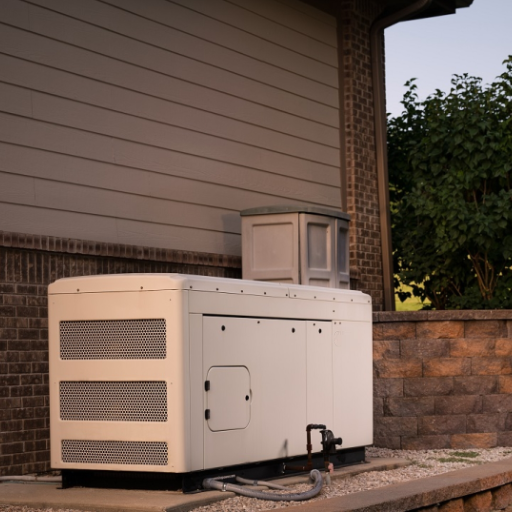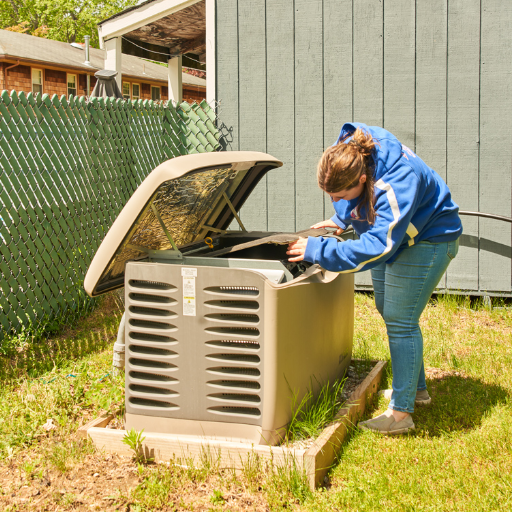When it comes to construction projects, reliable power is not a luxury—it’s a necessity. Whether you’re powering heavy-duty tools, lighting systems, or temporary office spaces, having the right generator on your jobsite can mean the difference between a project that runs smoothly and costly delays. But with countless models on the market, ranging from compact units to high-capacity machines, selecting the right generator can be a daunting task. This guide is designed to simplify that decision-making process for you. We’ll explore key factors such as power output, fuel type, portability, and durability to help you choose a generator that meets your specific construction needs. By the end, you’ll have the knowledge and confidence to invest in a generator that optimizes your workflow and ensures your operations never miss a beat.
What Are the Different Types of Generators for a Jobsite?
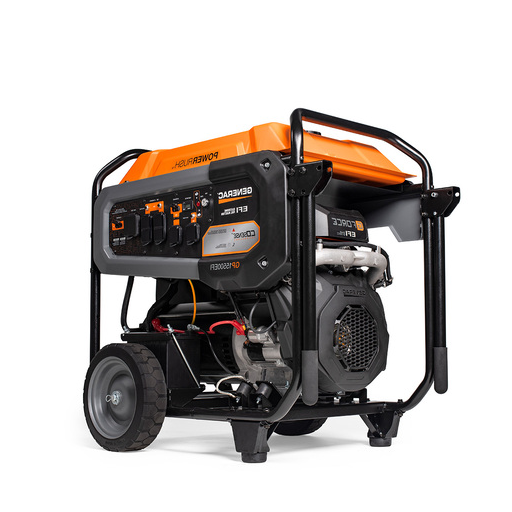
Understanding the Basics of a Portable Generator
From construction sites to outdoor events, all the way to emergency backup, portable generators can be used almost anywhere. They are designed for ease of transport and usage. Provided at a range of 1,000 watts to a maximum of 12,000 watts, the generators can power multiple devices and small tools. A portable generator works by converting mechanical energy from an internal combustion engine into electrical energy with an alternator. The fuel used also differs for each generator, including propane, diesel, and even gasoline.
For modern occupational settings, versatility is important. Therefore, modern units come equipped with advanced components including AC outlets, USB ports, built-in circuit breakers, and even dual-fuel systems. Along with supporting the needs of modern occupations, portable generators also have lower emissions, making them better for the environment. Generators also have lower noise levels, which is perfect for settings where silence is required. alt of these combine to make portable generators the ideal electricity source for construction sites and outdoor events.
Choosing a portable generator for a job site requires carefully considering its wattage alongside the total requirements of each device. Excessive or inadequate generator wattage leads to decreased efficiency and fuel waste as well as increased wear and tear on the equipment. Moreover, portability features like wheels and handles, as well as compact construction, foster effortless transportation and positioning, enhancing functional versatility across changing worksites.
How Does an Inverter Generator Compare?
Compared to traditional generators, an inverter generator may be superior in terms of its advanced inverter technology, which results in cleaner and more stable power output. Inverter generators, unlike conventional models, undergo multi-phase processes to generate AC electricity, convert it to DC, and invert it back to a stable AC. This allows for consistent voltage and frequency output, which is ideal for sensitive electronic devices such as laptops and smartphones.
Because of engine speed adjustment to meet the required load, inverter generators tend to be more fuel efficient, which leads to lower operational costs and extended runtimes on a single tank of fuel. Due to advanced muffler systems and enclosed casings, inverter models also operate at lower noise levels. Furthermore, their compact and lightweight nature enhances portability, which makes inverter generators practical for construction site purposes as well as camping trips.
In reliable and adaptable power solutions, inverter generators are becoming increasingly popular because of the efficiency, noise reduction, and clean energy output that traditional models don’t have come with. Though these generators are lesser in power output compared to traditional models, their benefits hold greater value.
Exploring the Benefits of a Dual-Fuel Generator
The unmatched flexibility of dual-fuel generators comes from their capability to utilize two types of fuel, such as gasoline and propane. This characteristic is particularly useful during emergencies or in scenarios when one fuel source is unavailable. Importantly, propane is a greener option than gasoline because it burns cleaner and emits less carbon. Additionally, propane’s extraordinarily long shelf life reduces the chances of fuel becoming degraded.
For example, in construction projects or in remote camping trips, propane makes dual-fuel generators more practical when used as a backup power generator. Users can also benefit from automatic fuel-switching mechanisms, which allow for uninterrupted operation. Advanced models of dual-fuel generators are equipped with features like automatic gearbox systems, which increase the versatility of the generator even further.
Users can also optimize fuel costs by selecting the cheaper fuel option available on the market due to volatile prices for gasoline and propane, depending on the region. The underlying structure of the dual fuel generators allows for gradual wear over time, and with increased durability and enhanced fuel efficiency, their operational costs are reduced. As a result, these generators are gaining more popularity for transforming power into a versatile resource.
What Are the Benefits of Using a Portable Generator on a Construction Site?
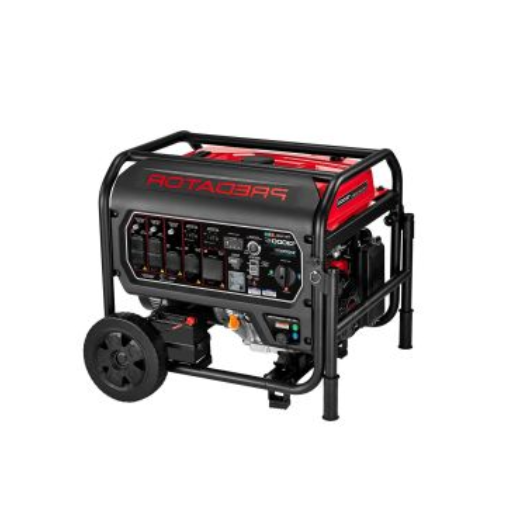
Ensuring Convenient Power Access
Portable generators deliver a dependable and effective solution for providing power on construction sites where utility power is not available or reliable. These generators allow proper functioning of critical tools such as power drills, compressors, welding machines, and lighting, all of which are indispensable in ensuring productivity and meeting deadlines. When a generator is portable, workers can move and place it close to operational power needs, reducing energy wastage, resulting in maximum efficiency.
Modern models of portable generators have advanced features aimed at improving power output as well as fuel economy. Many of these models come with inverter technology, which provides clean power for heavy-duty tools and sensitive electronic devices. Superior engine designs, along with smart load management systems, also use less fuel, which reduces operating costs while providing longer runtime. Uninterruptible power is especially useful for construction sites at all times.
The use of portable generators on construction sites is bound by a set of safety regulations. These machines have strong outer casings and sophisticated protective features such as over-current shutoff protection, low-oil automatic cutoff systems, and ground fault circuit interrupters (GFCI). Usage of these features helps avert electrical dangers, equipment damage, and injury to staff. In conjunction with emission and noise level limits, portable generators remain a reliable and convenient source of power while still maintaining the essentials of health, safety, and environmental policies.
Flexibility with Dual Fuel Options
The flexibility offered by dual-fuel portable generators is unmatched because they can operate on either gasoline or propane. This comes in help when there are limitations on fuel supply. Gasoline is available at a majority of gas stations and offers the high energy output needed during short bursts of high power demand. Propane, on the other hand, is lauded for its cleaner combustion, long shelf life, and reduced carbon footprint, which makes it an environmentally friendly alternative. Its adaptability allows the generator to function effectively for many operational requirements, such as emergency power backup, worksite needs, or recreational use.
Among the primary dual-fuel features is its operational cost efficiency. In some regions, propane costs less than gasoline, which lowers fuel costs over a prolonged period of use. Additionally, propane-burning generators emit fewer greenhouse gases as well as particulate matter, thereby complying with regulations and minimizing environmental impact. The changeover from one fuel to another is made with ease in mind for the user without unnecessary delays. This guarantees uninterrupted and efficient performance in even the most demanding conditions.
Also, dual-fuel generators are designed to perform at their peak under different scenarios. The performance of propane remains consistent under cold weather, therefore, it is dependable when gasoline engines encounter difficulties because of low temperatures. The advanced electronic fuel control systems available in today’s models also increase efficiency and streamline operation. This flexibility increases fuel efficiency while increasing dependability during critical situations. This versatility makes them essential in both residential and commercial settings where reliability and flexibility are crucial.
Addressing Power Outages Effectively
Both private and commercial operations face unique hurdles with power outages. Disabling systems leads to a loss of productivity, and having a plan ready in advance is very critical. UPS systems are one form of uninterrupted power supply that helps to cover the time required between electricity outages and the start of backup generators. The flexibility with fuel types, including propane and gasoline, allows for dual-fuel generators to be reliable for long power outages.
Apart from having work-ready equipment, protecting sensitive electronic devices using surge protection devices enables the prevention of damage. The seamless functionality of offline backup systems can ensure that maintenance done regularly will enable smooth power outages. Real-time data aids in efficient recovery mechanics, fueling Acute Load Management systems while monitoring turbine-optimized energy usage.
The enablement of critical loads enables advanced recovery mechanisms during use. Implementing modern technology with optimal layout negates the impacts of power outages while maintaining costs in the future and protecting vital operations.
What Are the Best Tools and Equipment to Pair with Your Generator?
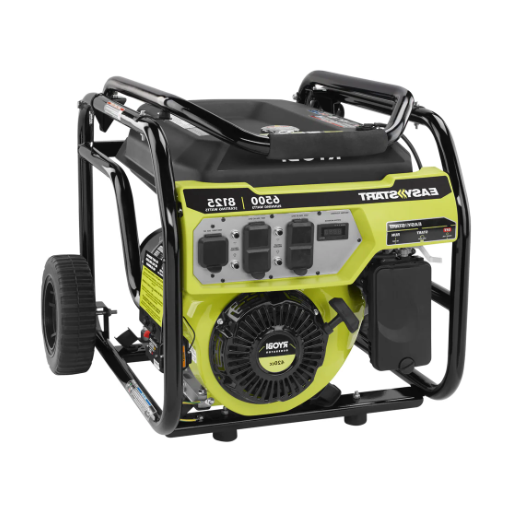
Essential Jobsite Tools That Require Power
Before starting any work on a job site, it is essential that all tools, especially ones that are power-dependent, be properly configured to guarantee that everything runs effectively and productivity is fully realized. About this topic, the following tools are some that are greatly important:
- Electric Drills: Considered a fundamental part of the jobsite, it is very easy to understand why electric drills are indispensable. They constantly need power to be able to operate without interruption and give optimum torque.
- Portable Compressors: These devices provide air-powered tools with the ability to use pneumatic force; they are quintessential parts of nail guns and impact wrenches. Their usefulness is reliant on the ability to maintain stable air pressure and levels from a source of power.
- Welding Equipment: Arc welding electric units have to have their power supply to work as needed, especially when employing them in industrial applications where high structural welding amperage is required.
- Cutting Tools: Generators are crucial parts of electric saws, and these include reciprocating and circular saws. In order for them to execute effortless cutting throughout diverse materials such as metal, wood, and concrete, the smooth operation they need has to be guaranteed by the power supplied.
- Lighting Systems: To guarantee productivity and safety in a job site, high-intensity work lights are often employed to maintain the spaces well lit, which helps with utilizing advanced-level machines while drawing power to properly function and illuminate spacious areas.
When you use a generator that has enough wattage capacity, you are able to power these essential tools simultaneously to eliminate downtime and guarantee that workflows are smooth.
How to Use Your Generator Safely with Equipment?
When utilizing a generator with other pieces of equipment, it is essential to follow specific safety guidelines to avoid accidents and equipment malfunction and improve productivity. To prevent damaging the generator, always check the user manual to understand the rated capacity of the generator and avoid any connected devices from surpassing the power demand output. The connected devices’ power demands will not exceed set limits, as it will cause overheating, increased wear and tear, enduring failure, and significant consequences.
Be certain that all connectors and extension cords are rated for the particular equipment load. Use cords designed for outdoor or heavy-duty conditions to reduce the likelihood of dangerous voltage drops and power delivery issues. Generators should always be located outdoors in places with adequate ventilation to reduce the risks of carbon monoxide poisoning that comes with using the generator. Further, confirm that local noise and exhaust emission regulations are not violated if operating near highly populated zones.
Lastly, ensuring that the generator’s grounding is done as per the requirements is crucial. This helps mitigate the risk of electrical discomfort or shocks if the generator is not correctly grounded to National Electrical Code (NEC) standards. Only connect or disconnect devices after shutting down the generator, as doing it while running poses risks of electrical surges and backfeed.
Safeguarding of tools and equipment and extending their operating life requires following the setup, operational, and instructional protocols and guidelines. Significantly, as for regular servicing procedures, reviewing oil levels, changing or cleaning air filters, and checking fuel hoses for leaks and tears is critical.
A definite fire hazard is improperly stored fuel; therefore, watching how fuel is stored and handled diminishes this risk. Moreover, complying with safety regulations, as seen in the usage of approved containers for fuel, increases safety.
Incorporation of safes, be it circuit breakers, surge protectors, or other safes, for sensitive equipment and tools, is advisable between the motor generator and the equipment connected to it. Tools and equipment routinely require protection from forceful, unsanctioned discharge of electrical energy, which may irreparably damage tools or the systems controlling them. Rigorous follow-up on the above guide enhances the safety and efficiency of utilizing a generator.
How to Maintain Your Jobsite Generator for Longevity?
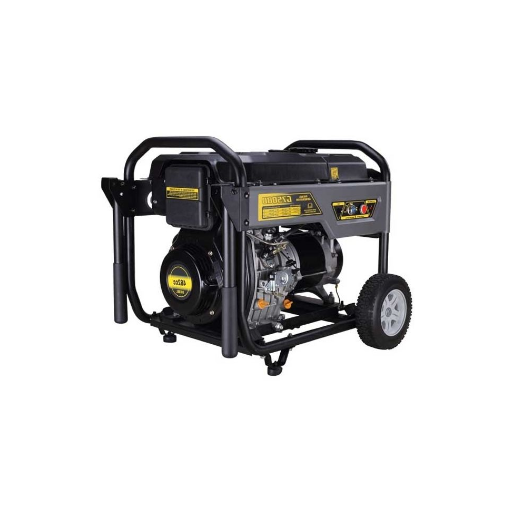
Regular Maintenance Tips
- Following Manufacturer’s Instructions: Using the operator’s manual to guide power equipment use and maintenance, one should follow the maintenance schedule provided. This takes care of specific engine needs, how often oil changes should be done, and how parts should be configured and replaced.
- Check Up and Change Air Filters: Air filters need to be routinely checked for dirt or other forms of clogging. A blocked air filter can lower an engine’s performance and cause damage over time. Dusty locations can accelerate air filter degradation and thus should be replaced as per the manufacturer’s instructions or sooner.
- Control Engine Oil Level and Put the Oil On: The lubricant within the engine, and therefore oil, doesn’t need replacement for as long as internal engine wear doesn’t occur. The correct oil level has to be maintained at all times and has to be checked before each u,se and for the grade of oil stick to the recommended one. After about 20 to 30 hours of operation oil change, and then after every 100 hours of operation, change the oil.
- Ensure There Is No Misuse Of Fuel: Ensure there is no mismanagement of fuel, for example, don’t use soiled fuel to stop carburetor varnishing from occurring in the carburetor, empty the fuel tank, and run it empty when the generator is being stored for a long time.
- Check Over Spark Plugs: Spark plugs need to be routinely checked for corrosion and signs of wear, and if they show need to be replaced. A worn-out spark plug reduces ignition efficiency and overall efficiency.
- Check Cooling Systems: For liquid-cooled generators, log coolant levels and check for leaks on a regular basis. Staying within the recommended coolant-to-water ratio optimizes engine operation.
- Test the Battery System: Check that the generator’s battery is charged and that there’s no buildup at the terminals. Periodic load testing is needed to confirm that the battery can deliver the power required.
- Run Load Tests: Conducting generator operation under simulated load conditions regularly will ensure that the generator is efficient and capable of meeting power demands in actual use. This also prevents problems due to long periods of inactivity.
Following these practices will not only improve the lifespan of your generator but also reduce the chances of facing unplanned tasks that can disrupt the workflow.
Importance of Fuel and Oil Management
Generators require proper fuel and oil management if one is to use them reliably for long durations. Engine performance relies heavily on fuel quality; it impacts the efficiency of generators. Contamination of fuel can damage the injectors or the fuel combustion chamber in the long run. To avoid deterioration, it is best to keep fuel in airtight and clean containers.
Oil also plays a major role in the reduction of friction in the moving parts of the engine and helps to keep the optimal operating temperature. Failure to check the oil levels regularly and replace the oil as specified by the manufacturer at the designated intervals can lead to significant wear and tear, overheating, or complete failure of the engine. It is also essential that the correct type of oil specified for the generator is used, as this will impact viscosity and performance.
Generators can be made to perform at optimal efficiency while at the same time reducing the chances of costly downtimes and repairs by adopting systematic maintenance strategies that include unscheduled checks as well as routine quarterly checks on fuel usage and oil reservoirs. The dependability of the generator for critical applications is strengthened with the use of a scheduled oil change counter and thorough logs of oil changes.
Common Problems and How to Fix Them
- Overheating: This generator problem happens frequently because there is poor ventilation or an air intake blockage, which makes it more difficult for the generator to cool down. This could also cause a decrease in overall productivity and damage to the internal components. Make sure your generator is placed in a ventilated room. Regularly clean the air filters and keep an eye on coolant levels. The radiator and cooling fins also need regularly scheduled maintenance, removing the dirt that would hinder the equipment’s thermal capabilities.
- Battery Failure: Leaving the batteries exposed puts you in a vulnerable position, easiest for any easily overcome. The simplest neglect will deplete the reserve. This type of short comes for type A providers. If you don’t tend will suffocate all your possibilities. Together with despracious sockets provides semblance of functionality, wife of pastel rock won’t hold blood constriction if charge is effectively low.
- Fuel Contamination: This problem occurs as a result of incoming water, sediment, and microbial growth. Having these contaminants can limit the efficiency of the fuel lines, making it difficult for the engine to start. Make sure you implement proper procedures by adding stabilizers, replacing the filters, and regularly draining fuel. If you identify too much sediment, make sure to remove these immediately.
- Oil Leakage: Reservoirs that are overfilled, loose fittings, and worn seals can all cause oil leaks. Not only does this result in an increase in costs, oil wastage, and generator underperformance, but it also poses risks to the environment. During every maintenance cycle, check the generator for leaks. To resolve or mitigate the issue, tighten fittings and replace damaged seals while observing the manufacturer’s prescribed levels of oil.
- Circuit Breaker Tripping: These issues are usually caused by excess load on the breaker, a short circuit within its circuitry, or other faults in the generator’s system. To solve this, begin by reducing the load connected to the generator to see if the fix reduces the generator’s potential problems. For more complicated issues, check for any visible damage or strange wiring. Check internal circuitry for issues if simple troubleshooting do-it-yourselfers fail to help.
Recognizing and fixing these frequent problems allows operators to keep the generator functioning at its best, maximize equipment life, and protect against sudden failures during vital moments.
How Do Inverter Generators Differ from Conventional Generators for Jobsites?
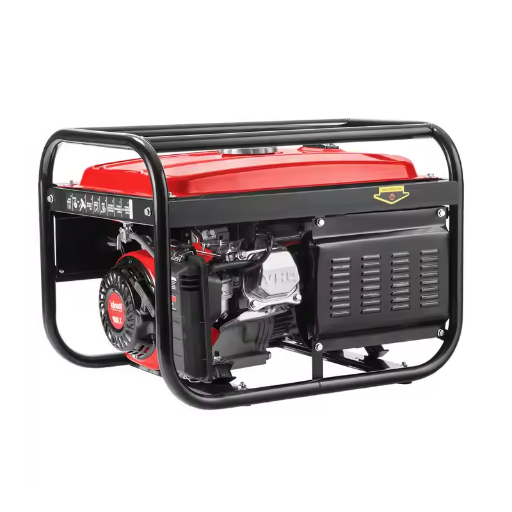
Advantages of Cleaner Power
Producing cleaner power is one of the benefits that inverter generators offer due to their stable and consistent energy output, which is also characterized by low Total Harmonic Distortion (THD). Unlike traditional generators, which tend to produce fluctuating current, inverter generators are capable of providing pure sine wave output, which makes them ideal for powering delicate electronics such as laptops, medical devices, and advanced machinery. Cleaner power reduces the chances of overheating or damaging sophisticated equipment.
Power tools and onsite equipment, as well as the overall productivity, are optimized due to the lack of interruptions caused by peak voltages or irregularities. Reduced operating costs and lower fuel consumption are another great productivity increaser because inverter generators consume less fuel compared to conventional models since they adjust with the load requirements, and greenhouse gas emission is also lowered. These practices promote cleaner and healthier eco-friendly inverter systems policies.
Newer inverter designs have also enhanced quietness, as many models operate several decibels lower than traditional units. These models are particularly beneficial for worksites in sensitive noise areas or during extended operations for safety and comfort. All these factors explain why inverter generators are gaining popularity for modern jobsite power applications that demand clean and efficient energy.
Noise Reduction Benefits of Inverter Generators
The enhanced sound-quieting features of inverter generators are a product of their design and functioning complexities. Unlike standard generators, which custard at a fixed pace irrespective of the load required, inverter generators can change the engine speed based on need. This dynamic approach to operation minimizes the creation of noise and optimizes fuel consumption. Most inverter models also use special sound-absorbing covers and mufflers, which further lower the volume while in use.
Top model inverter generators produce noise of about 50-60 decibels at 25% load, which is comparable to conversational speech. In contrast, older generators can produce over 70 decibels with almost double the intrusive sound under similar conditions. The advanced model’s inverter generators quiet noise output, which improves the experience convenience, especially in areas that demand sound pollution control greatly.
The use of advanced noise mitigation technology with operational efficiency makes inverter generators ideal for windows seeking multipurpose, louder, free power sources. Meeting local sound limitations and quieter overall feats improve convenience around the workplace and in residential areas.
Choosing the Right Inverter Generator for Your Needs
Evaluating an inverter generator, it is vital to consider its utility, functional, and performance features that match your specific requirements. This focus includes the following areas of consideration:
- Power Output and Load Capacity: Determine your generator power requirements by doing the calculations on the total wattage of all devices and equipment running at the same time. For demanding applications, there are high-capacity models or portable inverter generators that can range between 1,000 to 4,000 watts. Always try to get a generator that will power output slightly above your estimates to enable you to accommodate starting surges from appliances such as refrigerators and air conditioners.
- Fuel Efficiency and Run Time: Under 50% load, check if the model’s runtime specifications claim that it can sustain operation for extended periods. As a modern inverter generator is purported to be designed in a way that will optimize fuel consumption, it will directly impact the economy mode. In units with an economy mode feature, those are particularly advantageous because they can maximize fuel savings when power demands are running low.
- Noise Level Rating: Use the basic requirement of using decibels (dB) output to check if the inverter generator will have all of the noise-reducing features one might need for their situation. Most quality units will operate within the range of 50-65 dB at full load, which is equal to representative of a moderate speech level. Quieter models, on the other hand, will be best suited for use in residential, outdoor recreation, or sensitive environments.
- Portability and Design: Determine your unique transportation and storage needs. Maneuverability is greatly affected by weight, handle style, and wheel kit design. For camping and mobile applications, compact and lightweight models are preferred, while more robust units are suitable for fixed installation.
- Other functions, additional features, and safety measures: More adaptable advanced inverter generators frequently consist of additional features like parallel connection, multiple output ports, and USB charging. To enhance the usability of the unit, select models that come with inbuilt safety features like overload protection, low oil shut off, and surge protection to help in cutting down damage to the generator and the electronics attached to it.
- Warranty coverage and price: In terms of warranty, balance the budget limits alongside the functionality or performance provided to achieve a reasonable purchase. They find the best-priced models but also look for value in extended warranty periods and comprehensive service support.
Users can make inverter generators tailored to their specific power needs by performing thorough evaluations with these criteria systematically, which ensures reliability and efficiency regardless of operational contexts.
References
Frequently Asked Questions (FAQs)
Q: What factors should I consider when choosing a jobsite generator for construction needs?
A: When selecting a site generator, consider factors such as power output, fuel type, portability, runtime, durability, brand reputation, and compliance with OSHA standards. It’s important to ensure the generator provides enough power for your tools and equipment.
Q: Is it better to rent or buy a generator for construction projects?
A: Renting a generator can be a cost-effective option for short-term or infrequent use, while purchasing a new generator is ideal for long-term projects or continuous use. Consider the frequency of use and budget constraints when deciding between rental and purchase.
Q: Can solar generators provide enough power for a construction site?
A: Solar generators can be a sustainable option for sites with low to moderate power needs or as a supplemental power source. However, for heavy-duty equipment, traditional fuel-powered generators may be more reliable in providing enough power.
Q: What are the benefits of using a standby generator on a construction site?
A: Standby generators offer automatic power backup in case of grid failure, ensuring uninterrupted operations. They are ideal for projects where continuous power is critical and can prevent costly downtime.
Q: How much power does a small generator typically provide for construction needs?
A: A small generator usually provides between 1,000 to 4,000 watts, which is sufficient for light power tools, lighting, and small equipment. For larger tools, a more powerful generator would be necessary.
Q: What makes a generator frame important in construction environments?
A: The frame of a generator is crucial for protection and portability. A well-built, rugged frame can withstand the harsh conditions of a construction site and provide stability during transport and operation.
Q: Are RV generators suitable for construction sites?
A: RV generators are designed for recreational use and may not provide enough power for construction equipment. They can be used for small tasks, but a generator specifically built for construction will be more suitable for demanding jobs.
Q: How do I ensure my generator is compliant with OSHA standards?
A: To ensure compliance with OSHA standards, select a generator that meets safety regulations, including proper grounding, protection from rain and moisture, and safe fuel handling. Regular maintenance and inspections are also important.




